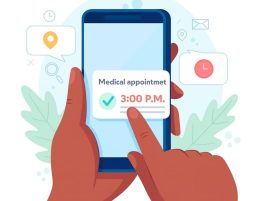
A holter monitor is a small, battery powered medical device that measures a person’s heart’s activity, such as rate and rhythm. The doctor may ask the patient to use one if they need more information about how their heart functions than a routine electrocardiogram (EKG) can give.
A holter monitor test is usually performed after a traditional test to check the patient’s heart rhythm (electrocardiogram), especially if the electrocardiogram doesn’t give the doctor enough information about the patient’s heart condition.
The doctor uses information captured on the Holter monitor to figure out if the patient has a heart rhythm problem. If standard holter monitoring doesn’t capture their irregular heartbeat, the doctor may suggest a wireless Holter monitor, which can work for weeks.
Why Does a Person Need a Holter Monitor?
Reasons the doctor might recommend a Holter Monitor includes;
- You have a fast, pounding, or fluttering heartbeat.
- Your heartbeat is too slow, too fast, or otherwise irregular.
- You’re tired, short of breath, dizzy or feeling faint.
- You have chest pain that isn’t caused by an exercise test.
- There’s a need to know how well your heart medication or pacemaker is working.
- The doctor needs to determine if you are at risk for future heart problems after a heart attack or because of another genetic or pre-existing condition.
- You have a pacemaker and feel dizzy.
How Does it Work?
This battery-operated device is about the size of a postcard or digital camera. It continuously records the heart’s electrical activity for at least 24 to 48 hours. Some newer models can record for up to 2 weeks.
Tiny wires connect the monitor to patches called electrodes that go on the patient’s chest. If the patient has a lot of chest hair, the technician may have to shave some off so the electrodes can stick firmly to the patient’s skin.
The patient can wear the monitor over their shoulder like a purse, around their neck like a camera, or attached to their belt, or they can carry it with them in a pocket. The patient won’t take it off during the test period unless they are in the bath or a pool.
Once the monitor is in place, the patient will be given instruction how to;
- Take care of it and change the batteries if needed
- Push a button on the monitor if they feel any heart symptoms
- Keep a written diary of all symptoms, including chest pain, changes in heartbeat, and what they were doing at the time
After the test period, they will go back to see the doctor and so they could download the information.
What We Offer
We at Almurshidi Medical Tourism will find the best doctors to cater to your needs. We are partnered with a wide network of hospitals and clinics that provide top quality medical experience.
We provide free medical estimates, make medical appointments, and provide several medical opinions if needed at no cost.
Contact Us
For more information contact us at +66822004040 or via WhatsApp








